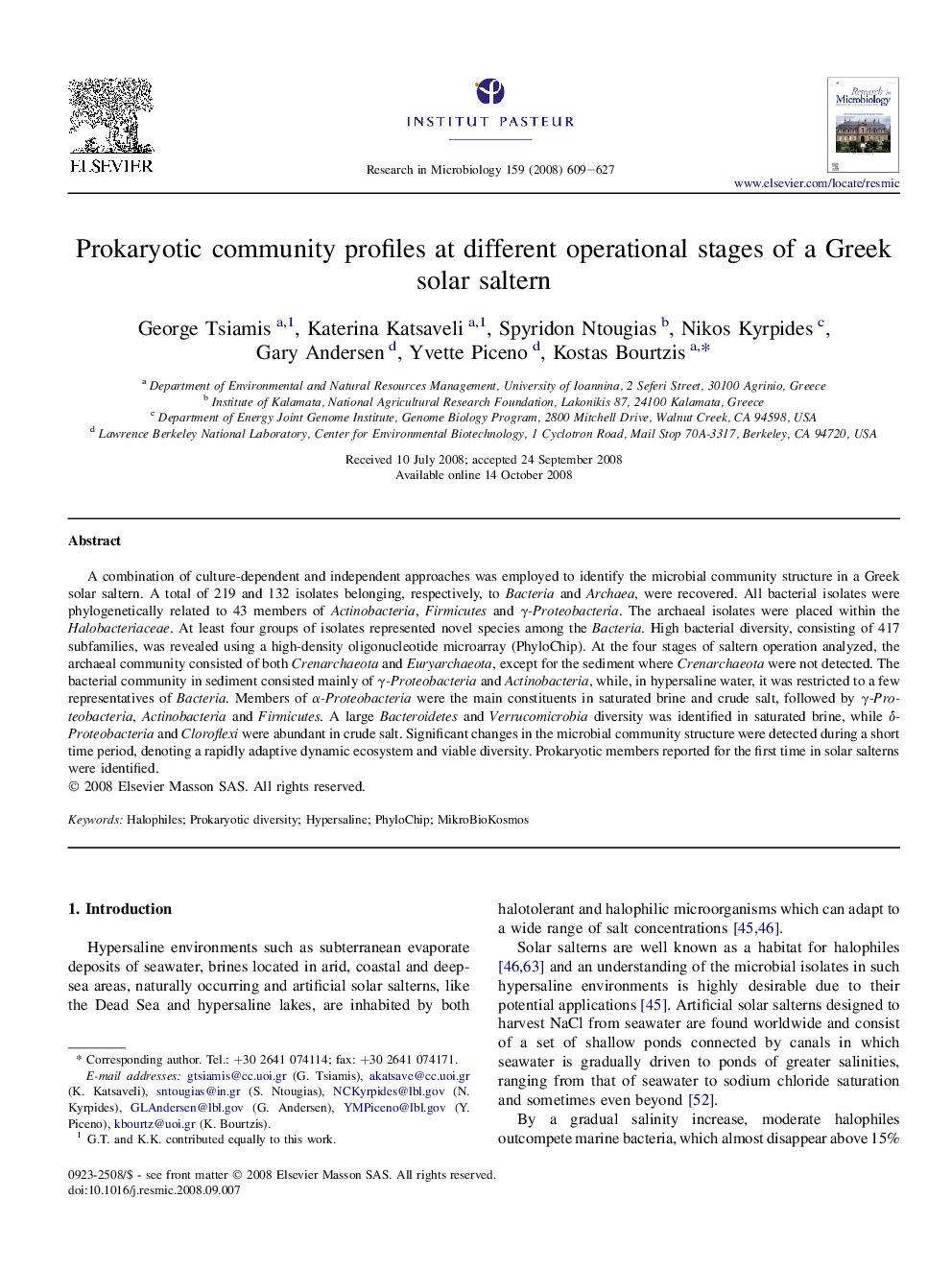| Article ID | Journal | Published Year | Pages | File Type |
|---|---|---|---|---|
| 6288196 | Research in Microbiology | 2008 | 19 Pages |
Abstract
A combination of culture-dependent and independent approaches was employed to identify the microbial community structure in a Greek solar saltern. A total of 219 and 132 isolates belonging, respectively, to Bacteria and Archaea, were recovered. All bacterial isolates were phylogenetically related to 43 members of Actinobacteria, Firmicutes and γ-Proteobacteria. The archaeal isolates were placed within the Halobacteriaceae. At least four groups of isolates represented novel species among the Bacteria. High bacterial diversity, consisting of 417 subfamilies, was revealed using a high-density oligonucleotide microarray (PhyloChip). At the four stages of saltern operation analyzed, the archaeal community consisted of both Crenarchaeota and Euryarchaeota, except for the sediment where Crenarchaeota were not detected. The bacterial community in sediment consisted mainly of γ-Proteobacteria and Actinobacteria, while, in hypersaline water, it was restricted to a few representatives of Bacteria. Members of α-Proteobacteria were the main constituents in saturated brine and crude salt, followed by γ-Proteobacteria, Actinobacteria and Firmicutes. A large Bacteroidetes and Verrucomicrobia diversity was identified in saturated brine, while δ-Proteobacteria and Cloroflexi were abundant in crude salt. Significant changes in the microbial community structure were detected during a short time period, denoting a rapidly adaptive dynamic ecosystem and viable diversity. Prokaryotic members reported for the first time in solar salterns were identified.
Related Topics
Life Sciences
Immunology and Microbiology
Applied Microbiology and Biotechnology
Authors
George Tsiamis, Katerina Katsaveli, Spyridon Ntougias, Nikos Kyrpides, Gary Andersen, Yvette Piceno, Kostas Bourtzis,
